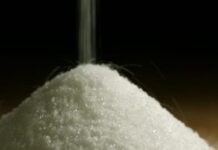Bullishness has returned to the commodities markets, with the weakening of the US dollar worldwide supporting prices of these assets. This movement has generated strong optimism, with several investment banks betting on a sharp commodity appreciation this year. Sugar could not stay out of the party. Since the second half of December, it has risen more than 200 points, being traded close to ¢US$16.00/lb.
In conversation with ChiniMandi News, Mr. Marcio Perin, Senior Market Research Analyst – ED&F Man shared his views on the current scenario of the global sugar market.
“Firstly if asked whether the current rally has solid fundamentals, our view is that there is a lack of them. We have a more cautious view compared to the market. After all, prices are approaching relevant parities, which many analysts consider as “fundamentalist ceilings” for sugar. However, in the short-term the buying flow is “dominant” and seems to be favorable to the bullishness, which can limit the fundamentals’ effect into the sugar market.
“Above ¢US$15.00/lb, India should not have difficulties to export its quota of 6 million tons of sugar that will be supported by the government. In fact, ISMA has indicated that traders and mills have already signed contracts for exports of more than 1.5 million tons in recent weeks. In other words, we would have practically guaranteed between 5 and 6 million tons from India, volume would rely more on logistical/trade restrictions than on economic viability.” He added.
Another potential “ceiling” is the Chinese demand. In 2020, the country was the main global sugar buyer, helping to “drain” the surplus produced in Brazil. To equalize its domestic demand, the country needed to import 5 million tons, but took advantage of favorable market conditions and bought 7 million tons (a mix of cheap international prices and inflated domestic market). In 2021, with bigger stocks and increased domestic production, purchases should be smaller. By how much? If the objective is “just” to balance demand, we could see a retraction of 4 million in purchases.
However, the bullish thesis of commodities market (not only for sugar) bets that China will consistently increase domestic stocks of major inputs it imports (sugar included), to guarantee its supply in a scenario of possible economic retaliation. If this is the goal, imports could be even higher in 2021.
Our thesis is that China could sustain, or even increase, its imports in 2021. However, this movement will relate to the import parity. This parity, in turn, depends on the Interaction between international and domestic prices. That is to say, in the current quotations, for China to keep buying, the domestic market would need to appreciate. Otherwise, only if there is a clear orientation of “building stocks at any cost”, the import window would be closed.
Another major importer is Indonesia. In 2020 it was very active in purchases, after a demand shock had inflated domestic prices. For 2021, we expect smaller imports. So far, the country has issued licenses for buying 1.9 million tons. This volume can (and we think it will) increase but should be smaller than 2020. This also tends to negatively affect the trade flow.
Finally, we have Brazil, which can be both a floor or a ceiling for sugar prices. Brazilian mills have a peculiar flexibility to produce sugar and ethanol. This flexibility took 10 million tons of sugar off the market in 2018 and 2019, volume that was replaced in 2020.
This movement depends essentially on the equivalent prices of ethanol, sold in the Brazilian domestic market. When ethanol pays better, mills focus on biofuel production, otherwise they will turn to sugar. Besides sugar prices, this parity is also affected by Brazilian Real and gasoline prices: in Brazil, consumers can use ethanol or gasoline in their vehicles; this fuel choice depends on global oil prices and BRL.
Under current oil prices, (slightly above US$ 50/barrel), with BRL close to 5.40, ethanol has worked as a “floor” for sugar prices – parity equivalent to ¢US$12.00/lb, more than 400 points below NY. Thus, if sugar dropped to nearly ¢US$12.00/lb, Brazilian mills would produce ethanol instead of sugar. However, at today’s prices, they will make as much sugar as possible in 2021.
This “maximum possible” will depend on the weather (or better, the summer rain), which affects the quantity and quality of available sugarcane. We currently estimate that sugar production in Brazil’s Center-South will be 2.5 million tons lower in the 2021-22 season (Apr-21 to Mar-22). However, some analysts predict that, despite the lower availability of sugarcane, sugar output will be close to the 38 million tons produced in 20-21. One bearish factor we all must keep an eye on this year.
Hence, to generate a deficit in the global supply and demand balance, and justify a more expressive rise in sugar prices, we would have to face a strong increase in global consumption (will it happen?) and/or a reduction in Brazil’s supply.
As previously said, Brazilian mills are inclined to produce as much sugar as possible. To get them to be dissuaded from this intention, crude oil must return to trade above US$ 90/barrel, or BRL to gain over the US dollar (unlikely given the political and economic challenges in the country).
These movements in FX and oil are highly connected to the commodity boom thesis many investment banks have been reporting by investment banks. However, to affect sugar supply, this rally would have to substantially happen within the 1st half of 2021, so mills would have time for changing their schedules.
In summary, the last few weeks have been quite positive for the commodities markets. Sugar has taken a ride in this more beneficial environment. The non-commercial funds returned to the purchases, adding a bullish tone to the markets. However, this rally does not seem to be supported by supply and demand fundamentals. In the short-term, the flow is sovereign. But in the medium term, this flow can be reversed, weakening even more fundamentals.”












